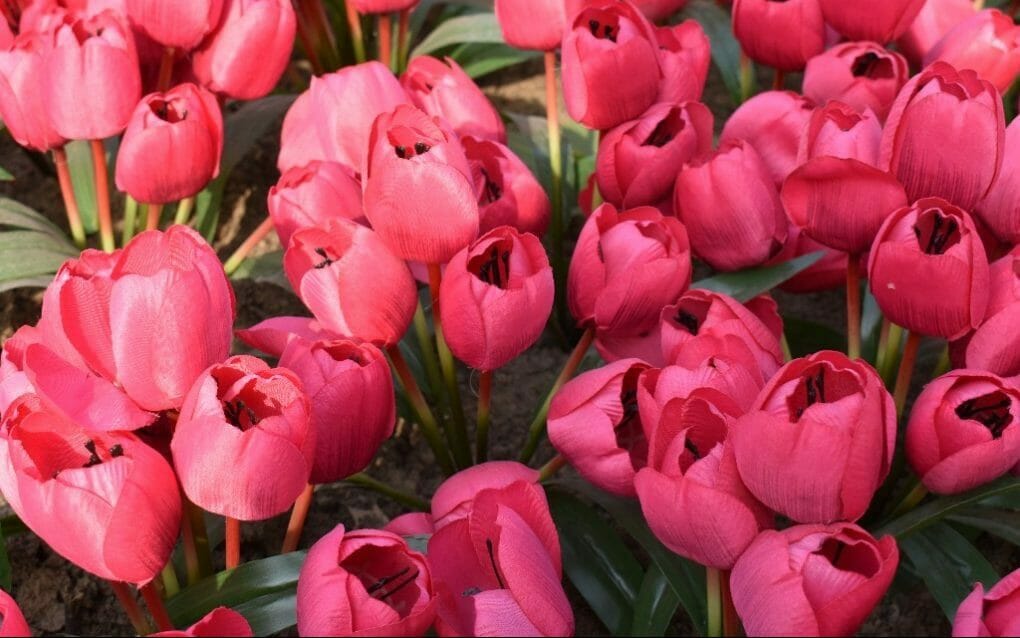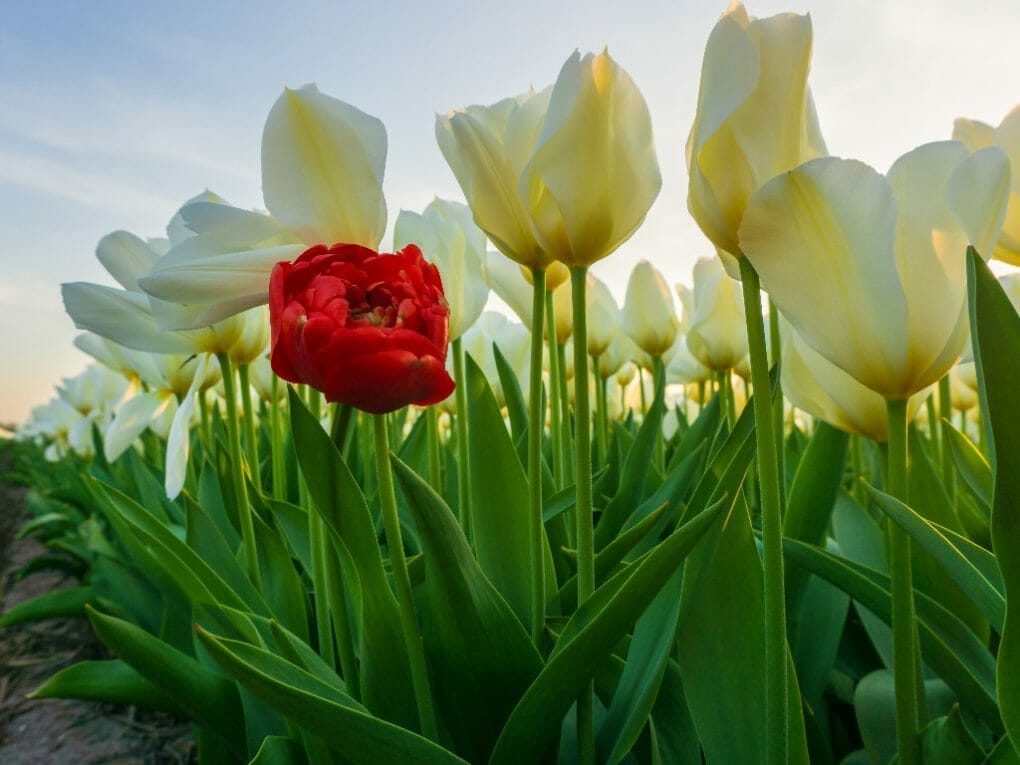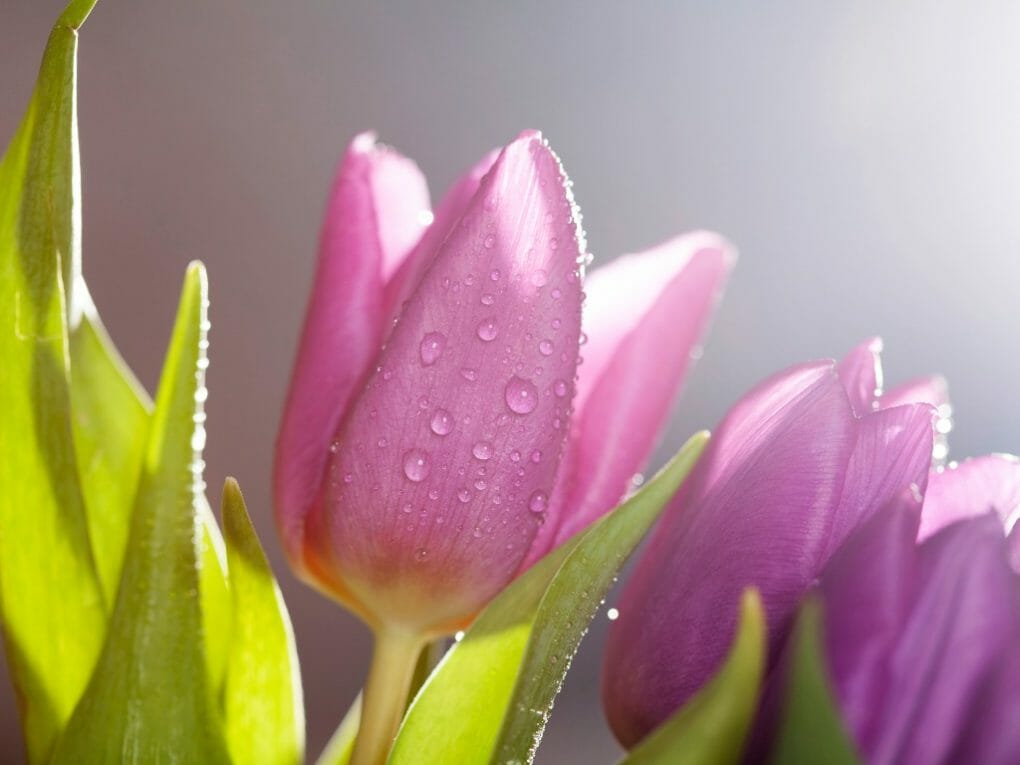Do Tulips Close At Night? Digging Deeper About Nyctinasty

Typically, tulips close up at night and, like many other flowers, exhibit behavior that scientists have dubbed nyctinasty when kept too close together at night. Low temperatures and darkness trigger this tendency, and it induces rapid growth in the lowest petals of tulip flowers. As a result, the flowers are effectively forced to close their petals.
Table of Contents
Digging Deeper About Nyctinasty
A blue-green pigment known as phytochrome is responsible for the regulation of nyctinasty. This pigment absorbs specific wavelengths of light, which in turn determines the patterns of growth and development that a plant is capable of experiencing.
When we talk about the color of light, we’re referring to the red and far-red lights that are part of the visible spectrum of the larger electromagnetic spectrum. There are specific times when each light shines, with the red light visible during the day and the far-red light being easier to make out as the sun begins to set.
Plants such as tulips can form a sleep-wake cycle because phytochrome can detect each of these lights. The red light indicates it is time to open up, while the far-red light indicates it is time to close up shop for the night. The actual opening and closing of the pulvinus are then accomplished by the pulvinus, which functions essentially as a motor organ.
However, shutting up can also occur in certain plant parts, meaning that the pulvini are unnecessary. In this particular instance, the function of the motor organ is taken over by the process of water moving into and out of the plant cells.
In addition to the onset of dusk, tulips and other plants that demonstrate nyctinasty behavior go dormant during periods
Reasons Why Tulip Close At Night
The scientific community is divided on this issue. And even now, there has yet to be a solution after years of consideration.
Several ideas attempt to explain the occurrence. Look at it now.
Protection from Nocturnal Predators
Animals are constantly searching for a late-night plant snack, and tulips are on the alert to ensure they aren’t on the menu, at least according to some scientists. Closing up merely makes it more challenging for creatures like bats, insects, and moths to bite.

This is one interpretation of the theory. Nyctinasty also gives nocturnal hunters like owls an excellent view of the ground. Another way tulips use it is to ward off predators. These predators can then quickly identify any herbivores that could be attempting to eat the leaves or blossoms.
Conserving Energy
Like other flowering plants, tulips are primarily pollinated by insects. Additionally, these insects are active during the day because of the vibrant colors of the spectacular blooms.
While maintaining the blooms’ openness may not seem like a difficult chore to us, the tulips find it rather tiring. It makes sense to do this during the daytime when pollination is possible. However, since the insects have gone to bed at night, as previously said, there is no need for it. Additionally, they are unable to see the flowers in any case.
To conserve energy for the next day’s return of light, it is preferable to fold up a little when night falls.
Lessen the Chance of Freezing
It turns out that plants are just as likely to freeze to death as animals are. The only difference is that they cannot relocate to warmer locations, so they must be a little inventive. Closing for the night is reportedly how plants do this since it also helps them retain most of their energy.
As you can see in these pictures, flowers are a particular example since they typically get warmer at night than leaves.
Maintaining Dry and Light Pollen Grains
Especially for tulips, which rely on wind pollination, wet pollen grains make flowering plants like tulips less viable and more challenging to transfer. The pollen is kept free of dew by closing the blooms at the end of the day.
Do Cut Tulips Close in the Evening?
The tulip blossoms that have been cut stay open during the day but close up after the sun goes down. If you want to preserve cut tulips in your home, purchase the ones starting to open up when you go to the store. The buds are only starting to open, but you can already see the color of the bloom through them. You will have an additional few days to appreciate the beauty of the flowers if you do this.
Cut tulips require significantly more water to keep their color and shape for extended periods. You can observe that the cut flowers in the vase are bending and drooping since they are getting old. But there is no need to be concerned about that because it is typical. In contrast to the vast majority of other plant species, Tulips may continue to produce new growth even after being clipped. Both the stems and the blooms develop in an upward direction to reach the light.
If you want the cut tulips to remain fresher in the vase for a more extended period, you can preserve them with a flower preservative. Ensure adequate warmth and light throughout the day to ensure flowering during the day, and ensure there is no artificial light at night so that they can close up at night.
Are Tulips Heliotropic or Photonastic?
Tulips are heliotropic because they tend to travel toward the sun’s direction and absorb its rays for improved photosynthesis. They bend, arch, and move to obtain light. The leaves of photonastic plants can open or close in response to changes in the available light. These movements are caused by the artificial light that is given to the plant.

Tulips can keep themselves warm at night thanks to their photonastic nature, which allows them to store the warmth they receive from the sun during the day and use it later. This vital vitality will be lost if the bloom stays open throughout the night.
How Can I Get the Tulips to Open Sooner?
Cutting the stems at an angle is a strategy used by the vast majority of gardeners, and it is used to speed up the flower opening and blooming process. The more significant and rapid absorption of water is achieved through diagonal cutting. If you want to prevent the stems of cut tulips from collapsing under the weight of the buds, choose a vase on the longer side.
When you first obtain the blooms, use lukewarm water rather than hot to speed up the opening of the buds. If you want your blossoms to look their best, steer clear of using either too-warm or too-cold water. When you place the cut flowers in a sunny location for some time, they will begin to reopen their petals.
To hasten the opening of the tulips, cut the leaves from the bottom of the stems. This will help avoid mold growth and direct the plant’s energy toward generating more blooms and fewer leaves. However, to speed up the process of the bloom’s opening, it is essential to provide the plant with enough light and water.
Putting a diffuser on the end of a blow dryer is yet another frequent technique for speeding up the process of opening tulips. Reduce the heat to a low setting, and while it is still on, wave the diffuser over the flowers. Because of the heat, the flowers will think there is sunshine even though there is none. It is important to remember that overheating the flowers with the diffuser and dryer can cause them to droop.
